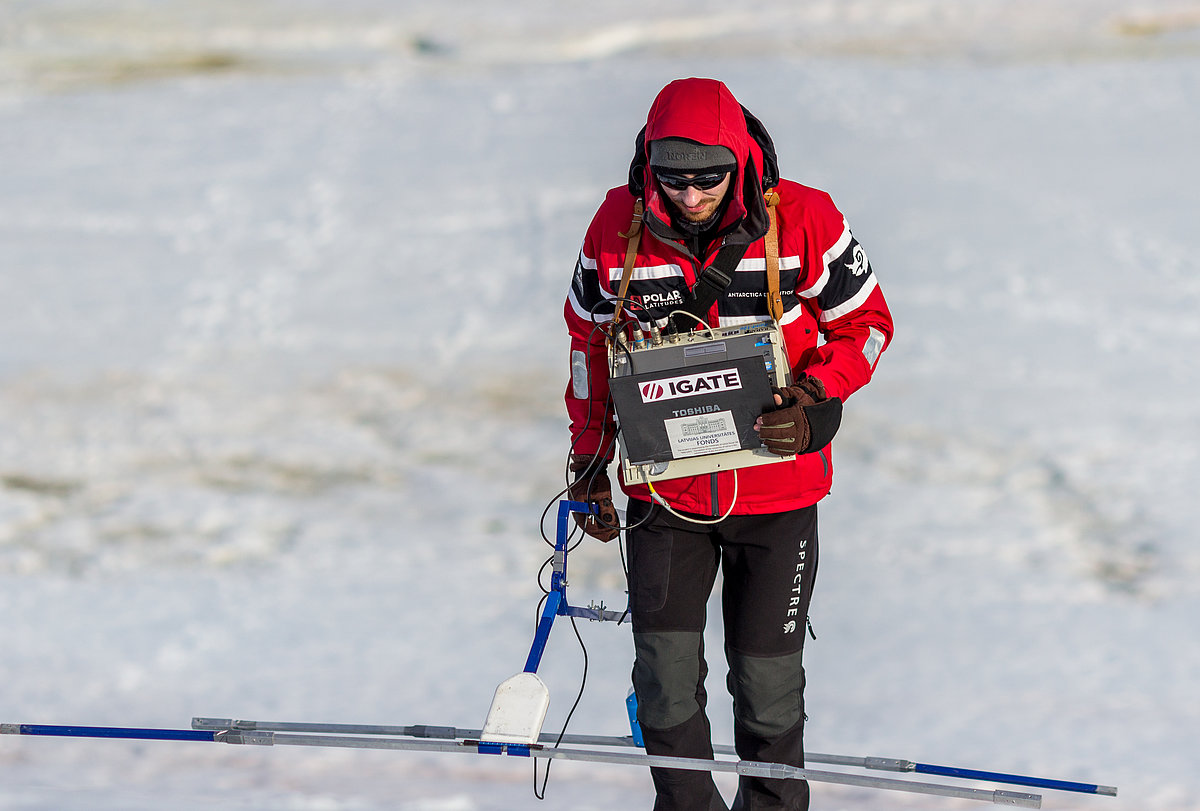This will be the sixth expedition of researchers to the Arctic, and the research in Svalbard will be carried out for the first time. Expeditions to date include Iceland, Greenland and Antarctica. An expedition to Antarctica is reflected in the documentary “Antarktīdas vilinājums” available on Youtube.
The expedition will be undertaken by the University of Latvia Faculty of Geography and Earth Sciences geologists and researchers Dr. geol. Kristaps Lamsters, Dr. geol. Jānis Karušs, doctoral student Pēteris Džeriņs, and the researcher of scientific institute “BIOR” Ingus Pērkons.
Both Greenland and Antarctic expeditions were sponsored by “Igate”, a road construction company, and the company also responded to the forthcoming polar expedition with financial support. “Igate” has implemented a number of structural fund projects to ensure climate-friendly and environmentally friendly nature of its activities. The company used European funding to carry out its “green projects”, whereas the support to the polar expeditions is sourced in the company itself. “Since the company's operations are also related to the production of road construction materials and the extraction of raw materials, involving geological exploration, “Igate” is proud to support specialists who are, in a sense, its 'own', – the UL geologists. We are once again pleased that Latvian polar explorers set out to face new challenges. This closely resembles our approach to business,” says Māris Peilāns, “Igate” Chairman of the Board.
During the expedition, the research base will be the polar station of the Nicolaus Copernicus University in Torun (Poland). It is located on the largest island of the archipelago – Spitzbergen. It is also the largest island in Norway, located approximately between Norway and the North Pole, and will be the farthest point north, where Latvians have studied glaciers to date.
60% of the Svalbard Archipelago is covered by glaciers, many of which can be called pulsating glaciers. After several decades or the period extending up to 150 years, these glaciers advance at speeds that can reach several tens of meters per day. Although most glaciers retreat under the influence of climate change, the behaviour of pulsating glaciers is still an unexplained phenomenon. Using geophysical research methods like radar and microseismics, scientists will make measurements to determine ice thickness, thermal structure, and evolution of the subglacial/intraglacial drainage network. Three-dimensional models of the subglacial environment and glacier surface will be created with the help of unmanned aerial vehicles and georadar, enabling understanding of the dynamics of the glaciers in the past and forecasting of future trends.
Scientists will collect samples in the territory adjacent to glacier to analyse the presence of a wide range of persistent organic pollutants (POPs). The obtained results will allow to characterize the presence of the particular POPs that migrate through atmospheric aerosols, as well as provide in-depth information on the chemical ‘fingerprint’ left by a specific class of POP group compounds – chlorinated paraffins.
The main sponsor of the expedition is "Igate" Road Construction Company (SIA "Ceļu būvniecības sabiedrība "Igate”).
The research is implemented under the research application of Kristaps Lamsters No. 1.1.1.2/VIAA/1/16/118, funded by the European Regional Development Fund in the framework of the support objective 1.1.1.2. activity “Post-doctoral Research Aid”, as well as the UL Faculty of Geography and Earth Sciences project “Sustainable use of natural resources in the context of climate changes”.

 CONFERENCE
CONFERENCE
